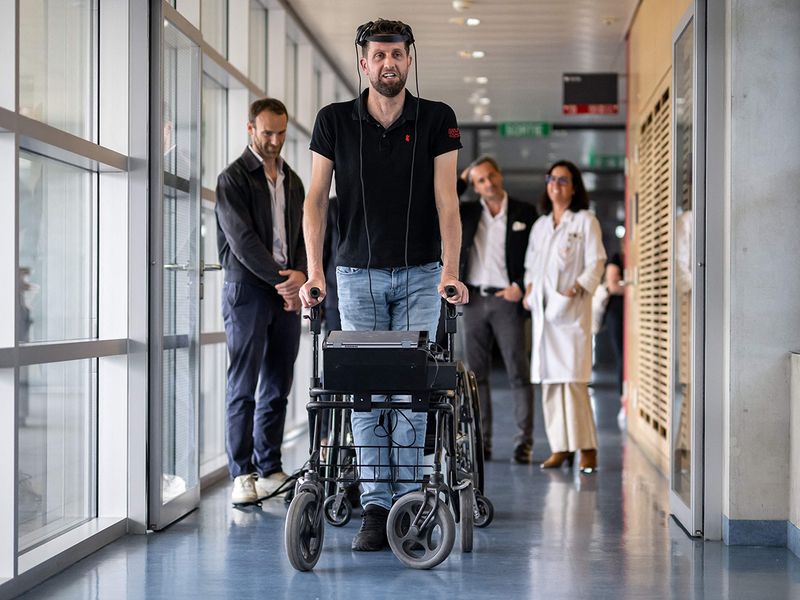Paris: A paralysed man has regained the power to stroll easily utilizing solely his ideas for the primary time, researchers stated on Wednesday, thanks to 2 implants that restored communication between mind and spinal wire.
The affected person Gert-Jan, who didn’t wish to reveal his surname, stated the breakthrough had given him “a freedom that I didn’t have” earlier than.
The 40-year-old Dutchman has been paralysed in his legs for greater than a decade after struggling a spinal wire harm throughout a bicycle accident.
However utilizing a brand new system he can now stroll “naturally”, tackle tough terrain and even climb stairs, in keeping with a research printed within the journal Nature.
The advance is the results of greater than a decade of labor by a crew of researchers in France and Switzerland.
Now I can simply do what I need – after I determine to make a step the stimulation will kick in as quickly as I give it some thought.
– Gert-Jan
Final 12 months the crew confirmed {that a} spinal wire implant – which sends electrical pulses to stimulate motion in leg muscle groups – had allowed three paralysed sufferers to stroll once more.
However they wanted to press a button to maneuver their legs every time.
Gert-Jan, who additionally has the spinal implant, stated this made it tough to get into the rhythm of taking a “pure step”.
‘Digital bridge’
The most recent analysis combines the spinal implant with new expertise referred to as a brain-computer interface, which is implanted above the a part of the mind that controls leg motion.
The interface makes use of algorithms based mostly on synthetic intelligence strategies to decode mind recordings in actual time, the researchers stated.
This permits the interface, which was designed by researchers at France’s Atomic Vitality Fee (CEA), to work out how the affected person desires to maneuver their legs at any second.
The information is transmitted to the spinal wire implant by way of a conveyable machine that matches in a walker or small backpack, permitting sufferers to get round with out assist from others.
The 2 implants construct what the researchers name a “digital bridge” to cross the disconnect between the spinal wire and mind that was created throughout Gert-Jan’s accident.
“Now I can simply do what I need – after I determine to make a step the stimulation will kick in as quickly as I give it some thought,” Gert-Jan stated.

Picture Credit score: AFP
After present process invasive surgical procedure twice to implant each units, it has “been a protracted journey to get right here,” he advised a press convention within the Swiss metropolis of Lausanne.
However amongst different modifications, he’s now capable of stand at a bar once more with mates whereas having a beer.
“This easy pleasure represents a big change in my life,” he stated in a press release.
‘Radically completely different’
Gregoire Courtine, a neuroscientist at Switzerland’s Ecole Polytechnique Federale de Lausanne and a research co-author, stated it was “radically completely different” from what had been completed earlier than.
“Earlier sufferers walked with a whole lot of effort – now one simply wants to consider strolling to take a step,” he advised a press convention within the Swiss metropolis of Lausanne.
There was one other constructive signal: following six months of coaching, Gert-Jan recovered some sensory notion and motor abilities that he had misplaced within the accident.
He was even capable of stroll with crutches when the “digital bridge” was turned off.
Guillaume Charvet, a researcher at France’s CEA, advised AFP this means “that the institution of a hyperlink between the mind and spinal wire would promote a reorganisation of the neuronal networks” on the web site of the harm.
So when might this expertise be out there to paralysed folks around the globe? Charvet cautioned it’ll take “many extra years of analysis” to get to that time.
However the crew are already getting ready a trial to review whether or not this expertise can restore operate in arms and arms.
Additionally they hope it might apply to different issues reminiscent of paralysis attributable to stroke.

